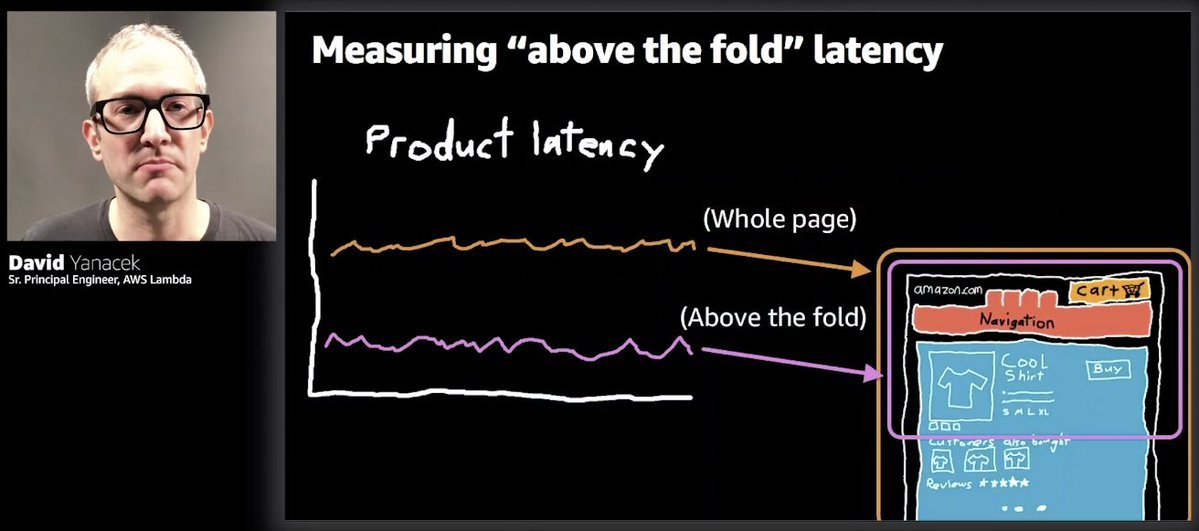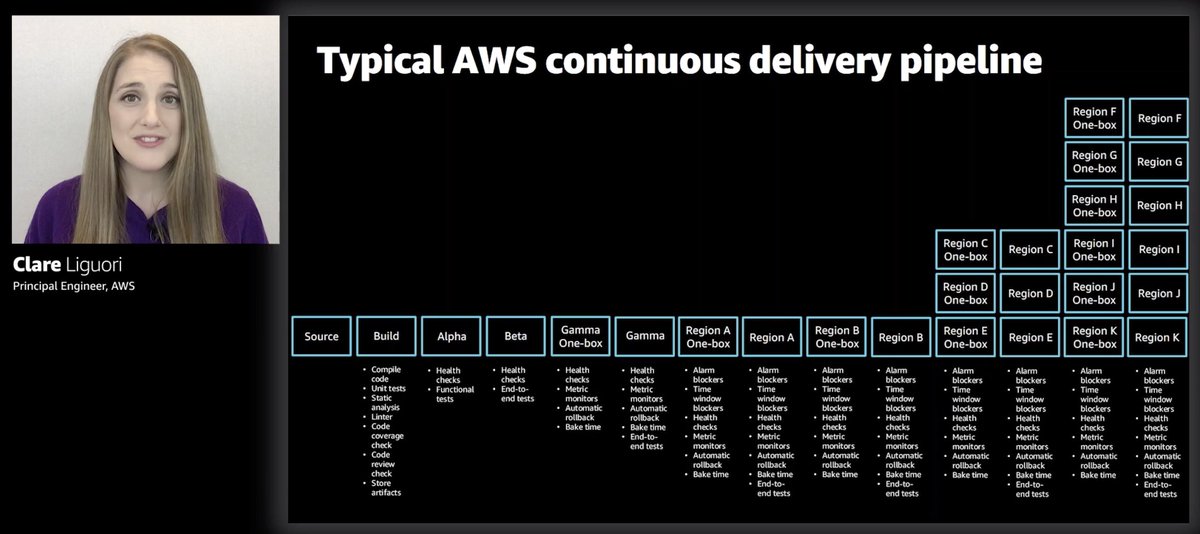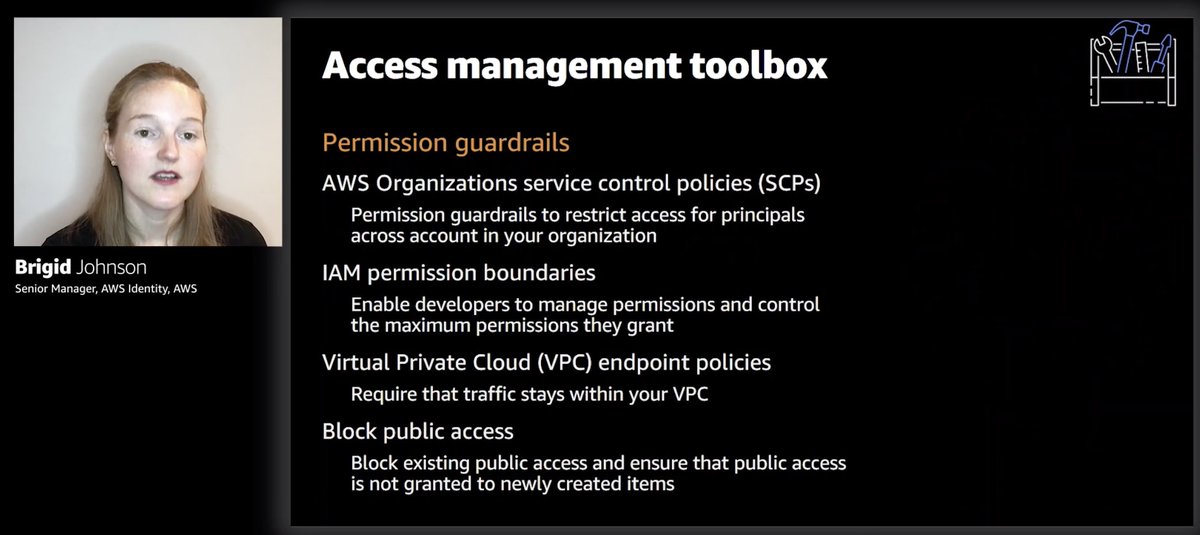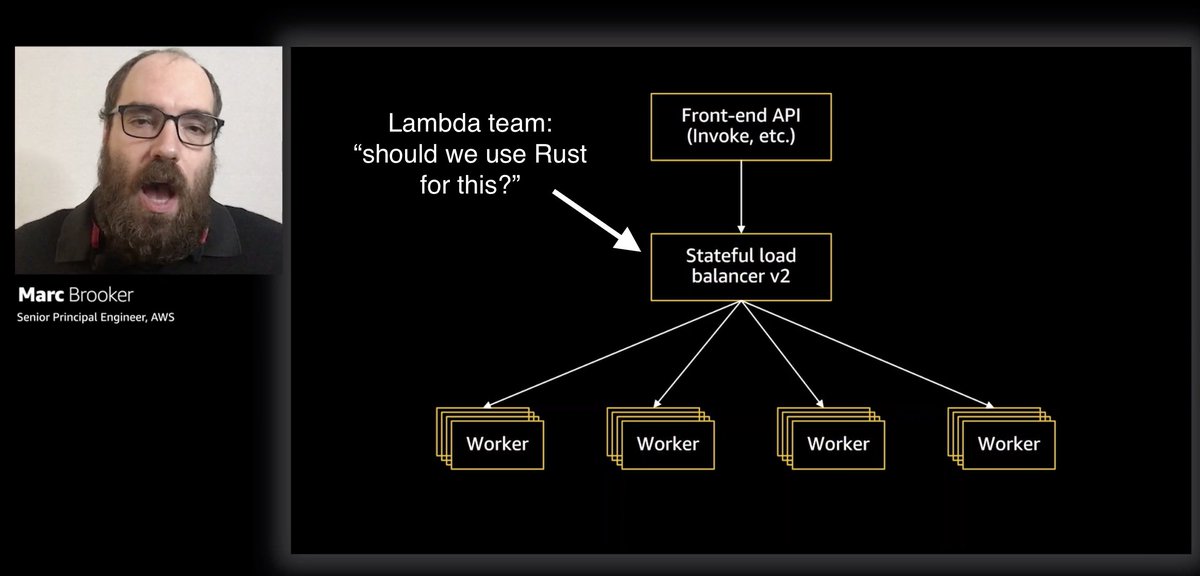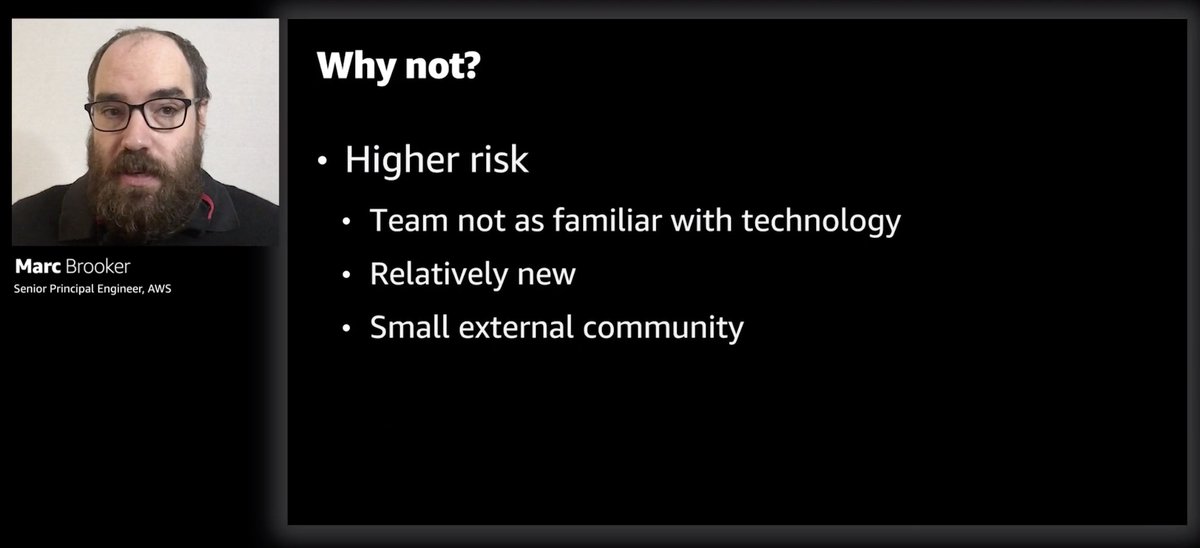
I've gotten a few questions about Aurora Serverless v2 preview, so here's what I've learnt so far. Please feel free to chime in if I've missed anything important or got any of the facts wrong.
Alright, here goes the 🧵...
Alright, here goes the 🧵...
Q: does it replace the existing Aurora Serverless offering?
A: no, it lives side-by-side with the existing Aurora Serverless, which will still be available to you as "v1".
A: no, it lives side-by-side with the existing Aurora Serverless, which will still be available to you as "v1".
Q: Aurora Serverless v1 takes a few seconds to scale up, that's too much for our use case where we get a lot of spikes. Is that the same with v2?
A: no, v2 scales up in milliseconds, during preview the max ACU is only 32 though
A: no, v2 scales up in milliseconds, during preview the max ACU is only 32 though
Q: is the cold start for Aurora Serverless v2 still a few seconds?
A: yes, unfortunately...
Q: so if you want to avoid cold starts, what's the minimum ACU you have to run?
A: minimum ACU with v2 is 0.5
A: yes, unfortunately...
Q: so if you want to avoid cold starts, what's the minimum ACU you have to run?
A: minimum ACU with v2 is 0.5
Q: does v2 still scale up in double increments, e.g. 4 ACU -> 8 ACU?
A: no, it scales up in increments of 0.5 ACUs, so it's a much tighter fit for your workload, so you'll waste less money on over-provisioned ACUs
A: no, it scales up in increments of 0.5 ACUs, so it's a much tighter fit for your workload, so you'll waste less money on over-provisioned ACUs
Q: is there anything I can do with v2 that I can't do with v1?
A: yes, v2 supports all the Aurora features, including those that v1 is missing, such as global database, IAM auth and Lambda triggers
A: yes, v2 supports all the Aurora features, including those that v1 is missing, such as global database, IAM auth and Lambda triggers
Q: wait, but it's twice as much per ACU!
A: yes, but v1 requires a lot of over-provisioning because it doubles ACU each time and takes 15 mins to scale down. v2 scales in 0.5 ACU increments and scales down in < 1 min. AND you get all the Aurora features!

A: yes, but v1 requires a lot of over-provisioning because it doubles ACU each time and takes 15 mins to scale down. v2 scales in 0.5 ACU increments and scales down in < 1 min. AND you get all the Aurora features!
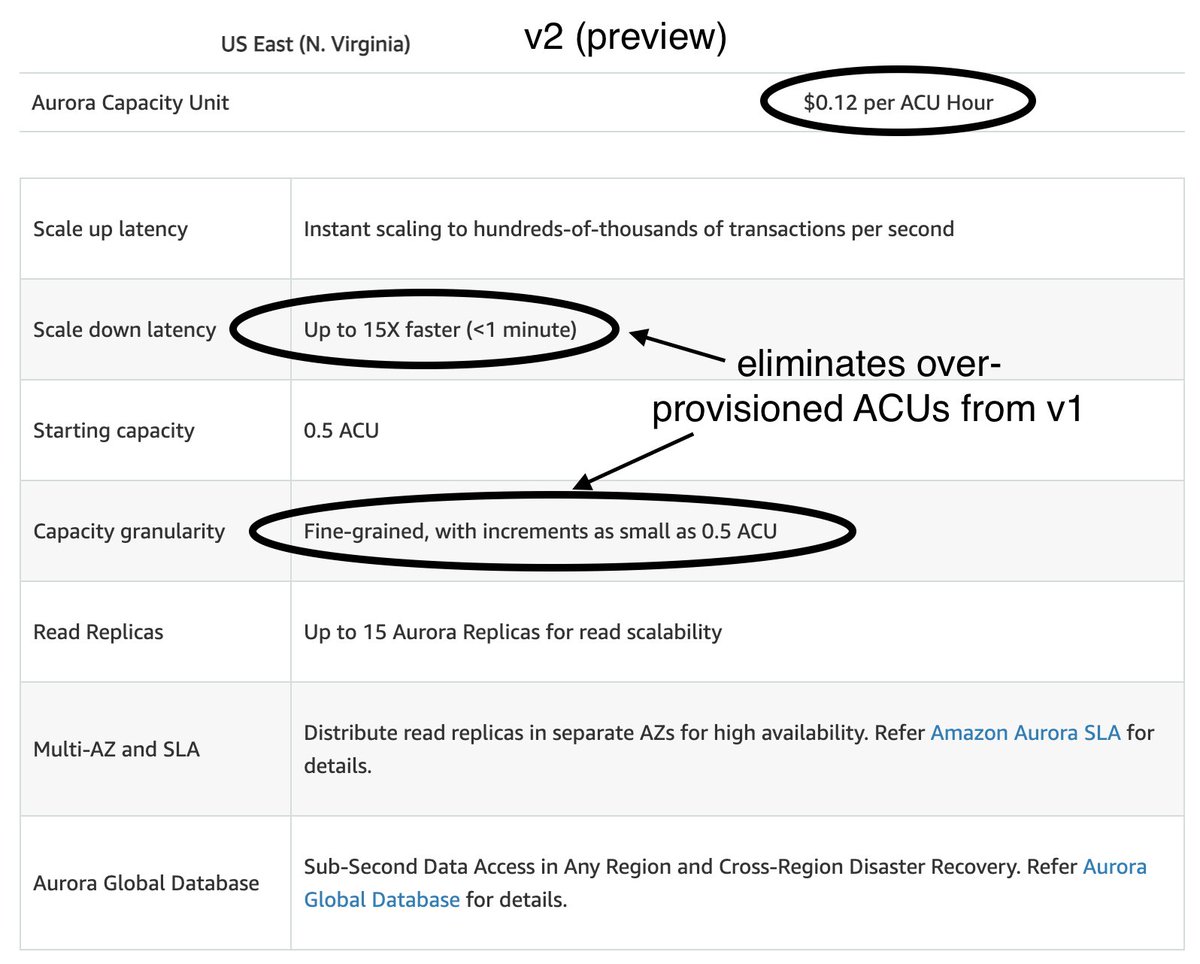

Q: can you use "provisioned" and "serverless" instances in the same Aurora cluster?
A: yes you can! cool, right!?
A: yes you can! cool, right!?
Q: is data API supported on v2?
A: not in the preview, I'm guessing it'll be there in GA
A: not in the preview, I'm guessing it'll be there in GA
Q: if using from Lambda, do I need to use RDS Proxy to manage the connections to the cluster? Data API kinda mitigated that for v1..
A: yes, you probably should, until data API is enabled on v2, otherwise, more connections = more ACUs, it can run you into trouble
A: yes, you probably should, until data API is enabled on v2, otherwise, more connections = more ACUs, it can run you into trouble
did I miss anything? plz feel free to chimp in
@jeremy_daly has written a nice summary post on this too, with a nice experiment on the scaling behaviour of v2, so check it out if you haven't already jeremydaly.com/aurora-serverl…
@jeremy_daly has written a nice summary post on this too, with a nice experiment on the scaling behaviour of v2, so check it out if you haven't already jeremydaly.com/aurora-serverl…
• • •
Missing some Tweet in this thread? You can try to
force a refresh

